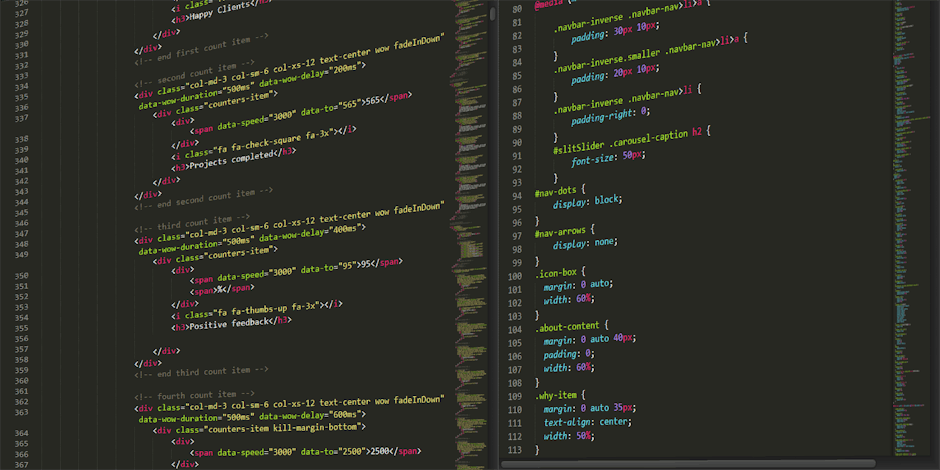 html
html
Web Scraping E-commerce stuff that's actually useful
Why E-commerce Web Scraping Matters
Let's face it, the e-commerce world moves fast. Prices change, products come and go, and your competitors are constantly tweaking their strategies. Keeping up manually? Forget about it! That's where e-commerce web scraping comes in. Think of it as your automated assistant for gathering crucial data. You can leverage this data to gain a competitive advantage and make data-driven decision making. Web scraping allows you to programmatically extract information from websites, which is way more efficient than copy-pasting for hours.
Imagine being able to automatically track competitor pricing, monitor product availability, or even build a database of product details for analysis. That’s the power of screen scraping in the e-commerce context. It's about gathering information to power your business.
What Can You Actually Do With E-commerce Scraping?
The possibilities are pretty vast. Here are just a few examples of how you can use web scraping to boost your e-commerce game:
- Price Tracking: Monitor competitor pricing in real-time. Identify opportunities to adjust your own pricing and stay competitive. Know when to drop prices, or even raise them!
- Product Availability: Track product stock levels to anticipate demand and avoid stockouts. This is super helpful for managing inventory and optimizing your supply chain.
- Product Details: Extract product descriptions, images, specifications, and customer reviews. This can be used to enrich your own product listings or analyze competitor offerings.
- Deal Alerts: Get notified when competitors launch promotions or offer discounts. React quickly to maintain your market share. Think lightning-fast responses to flash sales!
- Catalog Clean-up: Identify and remove outdated or inaccurate product listings from your own website. Ensure that your catalog is always up-to-date and accurate.
- Competitive Intelligence: Understand your competitors' strategies by analyzing their product offerings, pricing models, and marketing tactics. Gain valuable insights into the market landscape.
- Sales Forecasting: By understanding your competitors' pricing and product data, you can get better at estimating upcoming sales and manage stock.
These are just starting points, and you might find your own use cases as you start gathering more data. And it doesn't necessarily stop at your competitors! You can also use web scraping for market research, to understand customer sentiments, or to identify new product opportunities.
Choosing the Right Web Scraping Tool (and Language!)
There's a whole ecosystem of tools and languages out there for web scraping. The "best web scraping language" really depends on your needs and technical skills. However, Python is a popular choice due to its ease of use and extensive libraries.
Here's a quick rundown of some options:
- Python: With libraries like Beautiful Soup, Scrapy, and Selenium, Python is a powerful and versatile option. It's great for both beginners and experienced developers.
- Node.js: Libraries like Puppeteer and Cheerio make Node.js a solid choice for scraping JavaScript-heavy websites. If you're comfortable with JavaScript, this could be a good option.
- Dedicated Web Scraping Tools: There are also no-code or low-code tools that offer a user-friendly interface for building and running scrapers. These can be a good option if you don't have strong programming skills, but they might lack flexibility.
For complex websites that heavily rely on JavaScript, a headless browser like Selenium or Puppeteer is often necessary. These tools allow you to control a web browser programmatically, rendering JavaScript and simulating user interactions.
A Simple Python Web Scraping Example with Selenium
Let's dive into a simple example using Python and Selenium to scrape product titles from an e-commerce website. This example assumes you have Python installed and have installed Selenium, and a browser driver (like ChromeDriver for Chrome) installed and configured. ChromeDriver needs to be accessible in your system's PATH environment variable.
Step 1: Install Selenium
Open your terminal or command prompt and run:
pip install seleniumStep 2: Download a WebDriver
Download the appropriate WebDriver for your browser (e.g., ChromeDriver for Chrome) from the official website. Make sure it's compatible with your browser version. Place the executable file in a directory that is on your system's PATH, such as /usr/local/bin/ or C:\Windows\System32. This ensures that Selenium can find it. For example, download chromedriver and add it to your system PATH.
Step 3: The Python Code
Here's the code:
from selenium import webdriver
from selenium.webdriver.chrome.options import Options
from selenium.webdriver.common.by import By
# Configure Chrome options for headless browsing
chrome_options = Options()
chrome_options.add_argument("--headless") # Run Chrome in headless mode
# Initialize the Chrome driver
driver = webdriver.Chrome(options=chrome_options)
# URL of the e-commerce website you want to scrape
url = "https://www.example.com/products" # Replace with a real URL
try:
# Navigate to the URL
driver.get(url)
# Wait for a few seconds to allow JavaScript to load (adjust as needed)
driver.implicitly_wait(5) # seconds
# Find all product title elements (adjust the selector as needed)
product_titles = driver.find_elements(By.CSS_SELECTOR, ".product-title") # Replace .product-title with the correct CSS selector
# Print the product titles
for title in product_titles:
print(title.text)
except Exception as e:
print(f"An error occurred: {e}")
finally:
# Close the browser
driver.quit()
Step 4: Understanding the Code
- Import Libraries: We import the necessary libraries from Selenium.
- Configure Headless Mode: The
chrome_options.add_argument("--headless")line tells Selenium to run Chrome in headless mode, meaning it won't open a visible browser window. This is ideal for running scrapers in the background. - Initialize Driver: We initialize the Chrome driver, specifying the path to the ChromeDriver executable.
- Navigate to URL: The
driver.get(url)line tells the browser to go to the specified URL. - Find Elements: The
driver.find_elements(By.CSS_SELECTOR, ".product-title")line uses a CSS selector to locate all elements with the class "product-title" on the page. You'll need to inspect the website's HTML to find the correct selector for product titles. Use your browser's developer tools (usually accessed by pressing F12). - Print Titles: We iterate through the found elements and print their text content (the product titles).
- Error Handling: We include a
try...except...finallyblock to handle potential errors and ensure that the browser is closed properly.
Step 5: Run the Code
Save the code as a Python file (e.g., scraper.py) and run it from your terminal:
python scraper.pyThis should print a list of product titles from the specified e-commerce website to your console. Remember to replace "https://www.example.com/products" and ".product-title" with the actual URL and CSS selector for the website you're scraping.
Important Notes:
- Adjust the CSS Selector: The
".product-title"CSS selector is just an example. You'll need to inspect the HTML source code of the website you're scraping to find the appropriate selector for the product titles. Use your browser's developer tools. - Handle Dynamic Content: Many e-commerce websites load content dynamically using JavaScript. Selenium's
implicitly_waitis helpful here, but you may need to use explicit waits or other techniques to ensure that the content is fully loaded before you try to scrape it. - Be Respectful: Always be mindful of the website's terms of service and robots.txt file (more on that below).
Legal and Ethical Web Scraping: A Quick Note
Before you start scraping everything in sight, it's crucial to understand the legal and ethical considerations. Is web scraping legal? Generally yes, but it depends. Here's a quick rundown:
- Robots.txt: This file, usually located at the root of a website (e.g.,
https://www.example.com/robots.txt), tells web crawlers which parts of the site they are allowed to access. Always respect the rules outlined in this file. - Terms of Service (ToS): Read the website's terms of service to see if web scraping is explicitly prohibited. Many websites have clauses that forbid automated data collection.
- Respect Website Resources: Don't overload the website with requests. Implement delays between requests to avoid overwhelming their servers. Be a good internet citizen.
- Avoid Scraping Personal Information: Be careful when scraping personal information (e.g., email addresses, phone numbers). You may need to comply with privacy regulations like GDPR or CCPA.
In short, be respectful, transparent, and avoid scraping anything that could be considered private or confidential. When in doubt, err on the side of caution. Large-scale scraping or scraping for commercial use should be evaluated by legal counsel.
Scaling Up: When You Need More Than a Simple Script
The simple Selenium script above is a good starting point, but it's not ideal for large-scale scraping. For more complex projects, consider these strategies:
- Scrapy: A powerful Python framework specifically designed for web scraping. It provides features like automatic request retries, data pipelines, and spider management.
- Playwright Scraper: A robust and reliable option for scraping dynamic websites that use JavaScript heavily. Playwright supports multiple browsers (Chrome, Firefox, Safari) and offers excellent performance.
- Proxies: Use proxies to avoid getting your IP address blocked by the website. Rotate your proxies regularly to maintain access.
- Data Storage: Store the scraped data in a database (e.g., MySQL, PostgreSQL, MongoDB) for efficient querying and analysis.
- Parallel Processing: Use multiple threads or processes to speed up the scraping process.
- Web Scraping APIs and Data as a Service: Consider using data scraping services or purchasing pre-scraped data from reputable providers. This can save you time and resources, but be sure to verify the data quality and legality.
The right approach will depend on the complexity of your scraping needs and your technical resources.
A Quick Checklist to Get Started
Ready to dive in? Here's a quick checklist to guide you:
- Define Your Goals: What specific data do you need to collect and why? Be clear about your objectives.
- Choose Your Tools: Select the right web scraping tool and language based on your needs and skills. Python is a good starting point.
- Inspect the Website: Analyze the website's HTML structure to identify the elements you want to scrape. Use your browser's developer tools.
- Write Your Scraper: Develop your web scraping script or configure your chosen tool to extract the desired data.
- Test Thoroughly: Test your scraper on a small sample of pages before running it on a large scale.
- Respect Robots.txt and ToS: Always comply with the website's robots.txt file and terms of service.
- Monitor and Maintain: Regularly monitor your scraper to ensure it's working correctly. Websites change, so your scraper may need to be updated periodically.
- Store Your Data: Choose a suitable data storage solution for your scraped data.
Beyond Scraping: Business Intelligence and Automation
Ultimately, e-commerce web scraping is about more than just collecting data. It's about using that data to gain a competitive advantage, improve your business intelligence, and automate key processes. You can use scraped data to:
- Automate Price Adjustments: Automatically adjust your prices based on competitor pricing.
- Optimize Inventory Management: Predict demand and optimize your inventory levels based on product availability data.
- Personalize Customer Experiences: Use product data and customer reviews to personalize your website and marketing campaigns.
- Improve Sales Forecasting: Predict future sales based on historical data and competitor activity.
By integrating web scraping into your business processes, you can make more informed decisions, improve efficiency, and stay ahead of the competition.
Ready to automate your e-commerce data?
Don't spend hours manually collecting data. Let our tools do the work for you. Automate data collection, analysis, and reporting with ease.
Sign upinfo@justmetrically.com
#WebScraping #Ecommerce #DataScraping #PythonWebScraping #CompetitiveIntelligence #DataDriven #BusinessIntelligence #Selenium #PlaywrightScraper #AmazonScraping

